And, they also utilize cooling fans which might not be desirable in a listening environment.
Field Coils for Audio Systems
- Thread starter Audiophile Bill
- Start date
You are using an out of date browser. It may not display this or other websites correctly.
You should upgrade or use an alternative browser.
You should upgrade or use an alternative browser.
long cables other room and the problem is over. similar to pumps for air bearing turntablesAnd, they also utilize cooling fans which might not be desirable in a listening environment.
The field coil supplies arrived when I was at the Munich High End show. After returning home, I listened to a variety of music with my original regulated lab supplies, and then installed the new Tungar Bulb supplies and relistened. To reiterate, I am using the 4" compression midrange and the 15" bass driver from Classic Audio. The tweeters are Acapella plasma units. The most obvious change on initial listening is the increase in dynamic contrast. Instruments and voice sound more real and 3-dimensional. Plucked bass has more of the elastic quality, and transient attacks seem (even) faster. On more intent listening, there seems to be more detail. I could hear the very subtle sounds such as the different resonance of the strings when up and down bowing. The melodic line seems to be easier to follow, and it seems that the musicians are making an extra effort with their musical expression. The performance becomes more intimate, giving more of the feeling that he/she is playing for me. It is very difficult to explain in audio jargon, but the performance seems more musical. This could be a placebo effect, but I try to be as objective as possible. Whereas I had the midrange and bass at the same voltage before, because the lab supply only has one output, I increased the bass supply by 3V with the new supply according to the recommendation of John Wolff. I doubt this would make such a difference. The circuit looks pretty simple, with a power transformer, the two bulbs, and then a choke and filter capacitors. I don't understand the physics behind the difference that I can hear
So I haven’t spoke to John about these voltage differences by driver. When he delivered my T-3s with lab ps pair, we were told 18v. I later went to using a pair of BK Precision 1621-A ps because they proved more stable. These units claim to be constant voltage or amps. And I would not be opposed to acquiring another pair. Anyway, a question: do I understand this correctly, optimal voltage for the midrange driver then is 18 and the bass pairs would be 21 volts?? Thanks in advance.The field coil supplies arrived when I was at the Munich High End show. After returning home, I listened to a variety of music with my original regulated lab supplies, and then installed the new Tungar Bulb supplies and relistened View attachment 110671 . To reiterate, I am using the 4" compression midrange and the 15" bass driver from Classic Audio. The tweeters are Acapella plasma units. The most obvious change on initial listening is the increase in dynamic contrast. Instruments and voice sound more real and 3-dimensional. Plucked bass has more of the elastic quality, and transient attacks seem (even) faster. On more intent listening, there seems to be more detail. I could hear the very subtle sounds such as the different resonance of the strings when up and down bowing. The melodic line seems to be easier to follow, and it seems that the musicians are making an extra effort with their musical expression. The performance becomes more intimate, giving more of the feeling that he/she is playing for me. It is very difficult to explain in audio jargon, but the performance seems more musical. This could be a placebo effect, but I try to be as objective as possible. Whereas I had the midrange and bass at the same voltage before, because the lab supply only has one output, I increased the bass supply by 3V with the new supply according to the recommendation of John Wolff. I doubt this would make such a difference. The circuit looks pretty simple, with a power transformer, the two bulbs, and then a choke and filter capacitors. I don't understand the physics behind the difference that I can hear.
John now recommends 15V for the mids and 18V for the bass.So I haven’t spoke to John about these voltage differences by driver. When he delivered my T-3s with lab ps pair, we were told 18v. I later went to using a pair of BK Precision 1621-A ps because they proved more stable. These units claim to be constant voltage or amps. And I would not be opposed to acquiring another pair. Anyway, a question: do I understand this correctly, optimal voltage for the midrange driver then is 18 and the bass pairs would be 21 volts?? Thanks in advance.
Thank you so muchJohn now recommends 15V for the mids and 18V for the bass.
I studied Tungars for a while when this seemed to come up about 7-8 years ago. I'm convinced that the Tungars work only because as they heat up over time, their output slowly increases, such that the current increases too, helpful since the FC is heating up as well- and so will need more voltage to maintain current.Surely, it is just a voltage regulator with a series sense resistor to keep the current constant. Should not be hard to implement. I used constant current to regulate the heaters of my preamp for a while, but changed them to voltage regulation. The reason was that the sensing resistors, after passing high current constantly for a period of time, started to drift and became too much of a bother to replace.
In any case, Ralph has a lot of experience with the Classic Audio speakers. What is your subjective impression with their new Tungar supply ? I found they made a real positive change, but then I would after spending $8K including shipping for them.
IOW constant current is the way to go IMO.
BTW, if the value of your current sensing resistors were drifting, the solution is better resistors, not abandoning the idea!
Indeed, but I have this anxiety of the resistors shorting out, which could be disastrous !I studied Tungars for a while when this seemed to come up about 7-8 years ago. I'm convinced that the Tungars work only because as they heat up over time, their output slowly increases, such that the current increases too, helpful since the FC is heating up as well- and so will need more voltage to maintain current.
IOW constant current is the way to go IMO.
BTW, if the value of your current sensing resistors were drifting, the solution is better resistors, not abandoning the idea!
Resistors rarely short! The usual failure mode is for them to open up, and that would require that they are running too hot- likely because they were not properly rated for the application. FWIW, usually a current sensing resistor is in series with whatever the circuit is that is drawing current.
Yes, this is all very true. Unfortunately, space limitations dictate the choice of components in this case. I generally over rate everything by 100% if at all possible.Resistors rarely short! The usual failure mode is for them to open up, and that would require that they are running too hot- likely because they were not properly rated for the application. FWIW, usually a current sensing resistor is in series with whatever the circuit is that is drawing current.
So this is not a power supply of your own design.Yes, this is all very true. Unfortunately, space limitations dictate the choice of components in this case. I generally over rate everything by 100% if at all possible.
A DIY preamp, but space is still pretty tight.So this is not a power supply of your own design.
OK I'm confused. How does a preamp have power supplies for a field coil??A DIY preamp, but space is still pretty tight.
I have John Wolff's PS for my Classic Audio field coils. I was talking about my experience with current regulation, which I experimented with in my preamp heater supply. As the sensing resistors need to pass the full supply current, I noticed problems after a few years. Instead of replacing the resistors, I just changed the scheme to voltage regulation. It did not seem to make much difference SQ wise in this application.OK I'm confused. How does a preamp have power supplies for a field coil??
Ok, so my field-coil T-3s are now running on a pair of BK Precision 1621-A ps (each) as for now, Tungars are just out of reach. I wrote JW and he was very helpful in guiding me through the process of altering the power feeds internally for separating the midrange horn (15vdc) from the woofers (18vdc). Easy cheesie. So what sonic effect did this have? I’m still comparing. But the midrange appears a bit more relaxed in its presentation as one might suspect. And funny enough, the detail of musical textures and the soundstage present just a tad more involving and life like. It’s early on though and I need to do more extensive listening sessions to better understand this over time. But for now I’m very pleased, and for the minimal expense, I would recommend it with two thumps up. 
Ok, so in further listening with a broad range of musical forms I can confirm drums and acoustic strings are more pronounced, and have more thwack and pluck. There is a deeper sense of overall textural feel running the x4 PS (mids/tweets@15vdc and woofs@18vdc). This change caused slight loudspeaker and listening seat position changes as well to dial it in!
Totally realizing that these BK Precision PS are constant voltage (not constant current) yet the voltage (and subsequent current) differences to the drivers, perhaps even the possible head room for greater dynamic current offered, does have a very noticeable sonic effect.
Now I can only wonder where I could acquire, high quality constant current devices and what the results of that difference might unveil…
If anyone has a source for cost effective high quality constant current PS I would be interested in investigating them.
* I also curiously find that it is very desirable to be playing now at a slightly lower volume by several clicks. Which leads me to believe with the greater sense of detail and dynamics I needn’t try to compensate with the volume knob. A very positive sign.
Totally realizing that these BK Precision PS are constant voltage (not constant current) yet the voltage (and subsequent current) differences to the drivers, perhaps even the possible head room for greater dynamic current offered, does have a very noticeable sonic effect.
Now I can only wonder where I could acquire, high quality constant current devices and what the results of that difference might unveil…
If anyone has a source for cost effective high quality constant current PS I would be interested in investigating them.
* I also curiously find that it is very desirable to be playing now at a slightly lower volume by several clicks. Which leads me to believe with the greater sense of detail and dynamics I needn’t try to compensate with the volume knob. A very positive sign.
Last edited:
Speak to Wolf at WVL. He supplied me with a custom power supply. Thomas Mayr also makes them but I found him to be quite arrogant and rude. Wolf was a pleasure to deal with!Ok, so in further listening with a broad range of musical forms I can confirm drums and acoustic strings are more pronounced, and have more thwack and pluck. There is a deeper sense of overall textural feel running the x4 PS (mids/tweets@15vdc and woofs@18vdc). This change caused slight loudspeaker and listening seat position changes as well to dial it in!
Totally realizing that these BK Precision PS are constant voltage (not constant current) yet the voltage (and subsequent current) differences to the drivers, perhaps even the possible head room for greater dynamic current offered, does have a very noticeable sonic effect.
Now I can only wonder where I could acquire, high quality constant current devices and what the results of that difference might unveil…
If anyone has a source for cost effective high quality constant current PS I would be interested in investigating them.
* I also curiously find that it is very desirable to be playing now at a slightly lower volume by several clicks. Which leads me to believe with the greater sense of detail and dynamics I needn’t try to compensate with the volume knob. A very positive sign.
Grounding the PSU to a Shunyata Altaira and putting it on a Seismion active vibration base also made significant improvements. Hard to believe, perhaps; but the power supply is essentially in the signal path.
Thanks.Speak to Wolf at WVL. He supplied me with a custom power supply. Thomas Mayr also makes them but I found him to be quite arrogant and rude. Wolf was a pleasure to deal with!
Grounding the PSU to a Shunyata Altaira and putting it on a Seismion active vibration base also made significant improvements. Hard to believe, perhaps; but the power supply is essentially in the signal path.
In fact, power supplies are the other “critical sonic source” besides a music format imho. We can clearly hear their effects.
And yes, I utilize two Shunyata Denali V2. One at the frontend and one on (adjacent wall) backend of my kit. Everything, power supplies, including power amps are plugged into the V2s and chassis grounded to it. And it makes a very obvious difference. More dynamic, more detailed, greater sense of the room “space” the performance was recorded in, and a more effortless presentation.
Indeed, fully agree. I have 4 Denali V2, 3 Altaira Signal Hubs and a Typhon T2. Try the Altaira next - the difference is not subtle!Thanks.
In fact, power supplies are the other “critical sonic source” besides a music format imho. We can clearly hear their effects.
And yes, I utilize two Shunyata Denali V2. One at the frontend and one on (adjacent wall) backend of my kit. Everything, power supplies, including power amps are plugged into the V2s and chassis grounded to it. And it makes a very obvious difference. More dynamic, more detailed, greater sense of the room “space” the performance was recorded in, and a more effortless presentation.
Hi DetroitVinylRob,Ok, so in further listening with a broad range of musical forms I can confirm drums and acoustic strings are more pronounced, and have more thwack and pluck. There is a deeper sense of overall textural feel running the x4 PS (mids/tweets@15vdc and woofs@18vdc). This change caused slight loudspeaker and listening seat position changes as well to dial it in!
Totally realizing that these BK Precision PS are constant voltage (not constant current) yet the voltage (and subsequent current) differences to the drivers, perhaps even the possible head room for greater dynamic current offered, does have a very noticeable sonic effect.
Now I can only wonder where I could acquire, high quality constant current devices and what the results of that difference might unveil…
If anyone has a source for cost effective high quality constant current PS I would be interested in investigating them.
* I also curiously find that it is very desirable to be playing now at a slightly lower volume by several clicks. Which leads me to believe with the greater sense of detail and dynamics I needn’t try to compensate with the volume knob. A very positive sign.
Speaking of Tungars, John stopped by my house and helped setup the T 1.5s. They survived the one-year hibernation in storage, yeah. I took out the horn section and kept those with me in the apartment and brought them with me in a U-Haul along with other audio equipment and special edition records. It took about a good 1.5 - 2 hours to get the speakers reassembled. We had to unpack the speakers first and remove all of the shipping protection that John sent me to protect the speakers prior to them getting loaded on the moving truck and stored for nearly a year. These are huge beasts, but they fit nicely in the new room which is larger than the last room. The new room dimensions are 32 X 22 X 10. Those were the dimensions before double 5/8 drywall, Greenglue and resilient channel throughout the entire room, floor to ceiling.
John also brought a brand-new pair of Tungars. How can I say no
John and Mike left before I was able to cable all of the audio components and begin testing. I tested each component individually before I connected everything in a chain. One Mcintosh amp needed a set of new tubes because it went into fault mode when the plate power grid would power up. I will isolate the bad tube once I can locate the tube tester. The house is in chaos from all of the moving boxes and with stuff not in the rooms that they are supposed to be in.
Sound with the Tungars: Oh my!!! All I can say is from initial play to a warmed up system. The clarity in the mids and depth of the bass was just incredible after the entire system was warmed up. It was a total night and day difference. Some of that is atypical of tube warm up, especially in the Aesthetix Io dual power supply setup, we all know that song, but things seemed different this time. It seemed as though the music was effortless in its ability to play back vocals and capture the venue with more presence. My wife said that it seemed as if the acoustic space was more realistic. We were playing Joe Bonamassa release "Live At Carnegie Hall" and the song we chose to sample was "Drive".
I had to remind her that the room is not measured and treated yet and the room is larger. We both agreed that despite the current state of the room and not being able to play my better turntable, arms (SME/Transrotor), and cartridges (Hyperion/Opus 1), the Transrotor Dark Star with Hyperion Sussaro MKII was really a good shoe-in to test the Tungar power supplies and it all sounded great to us. The same voltage was used for the mids (15vdc) and bass (18vdc) as what John recommended for dual BK Precisions power supplies on each speaker. I only had a few hours of listening, but it was a great start and no noticeable increase in room temps despite all of the tubes, 64 of them. The Tungars felt tube warm but not hot.
As a wrap up, I would say that powering each of the field coil drivers in the Classic Audio T series is well worth the upgrade due to the sonic improvements. The depth of bass was seriously something that I noted. I walked out of the room and closed the door, left the volume to run the amps around 30 watts with 100 watt peaks, the sound was loud and clear in the room but outside it was as if I had turned on a subwoofer. I know the 18" downward bass driver could do bass well at my last house but this seems different as the drums and bass were definitely deeper outside the room. No, not a muddy bass like some car stereo blasting windows out and bass resonance galore, this was super deep bass that was as if I had turned on a subwoofer. I like it. Going back to the mids and highs, I tweaked the mid and high pots on the speakers to straight up as a starting point. I left the pots at those settings throughout the listening session and I felt that that was probably the ideal setting with the Tungars. Just to reiterate, the midrange presence appeared to have way more depth adding to the space of the venue. When Joe sings, it reverberates throughout the room with the ambient live feeling that you get, well, at a live venue that has ambience.
Using Shunyata Sigma NR2 on the Tungars and on most source equipment. Each Tungar is plugged in their own 15 amp circuit.
It would be interesting to get together to compare these two setups. Enclosed are some pics. I am north of Grand Rapids in small town USA, LOL. We could meet at Classic Audio for a demo day as well. 2 hours for me one way to Brighton.
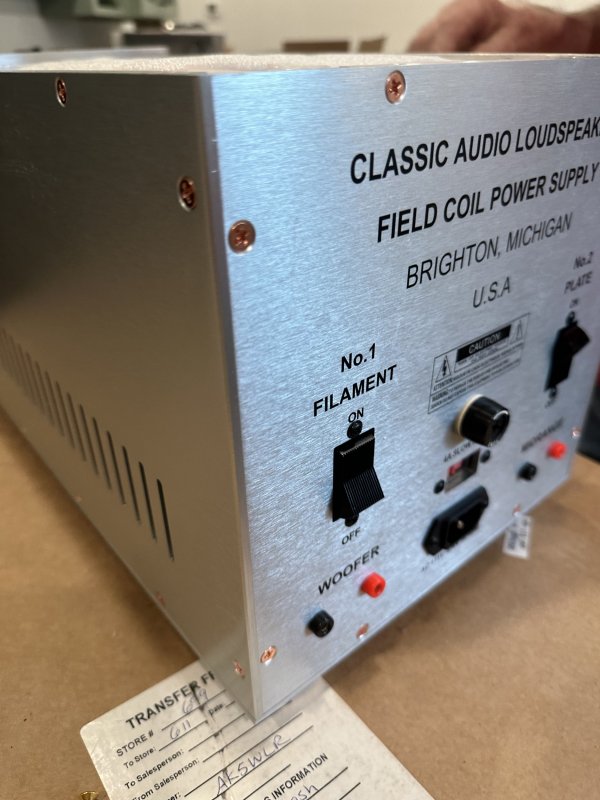
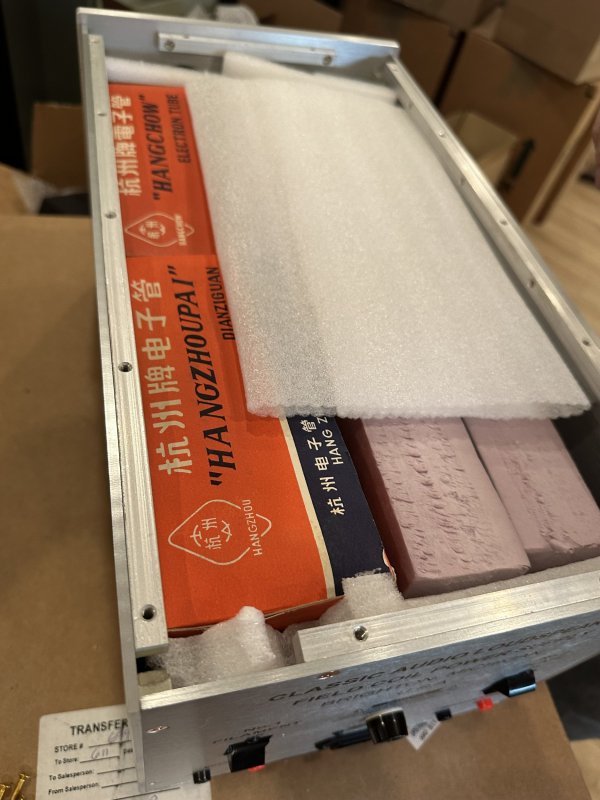
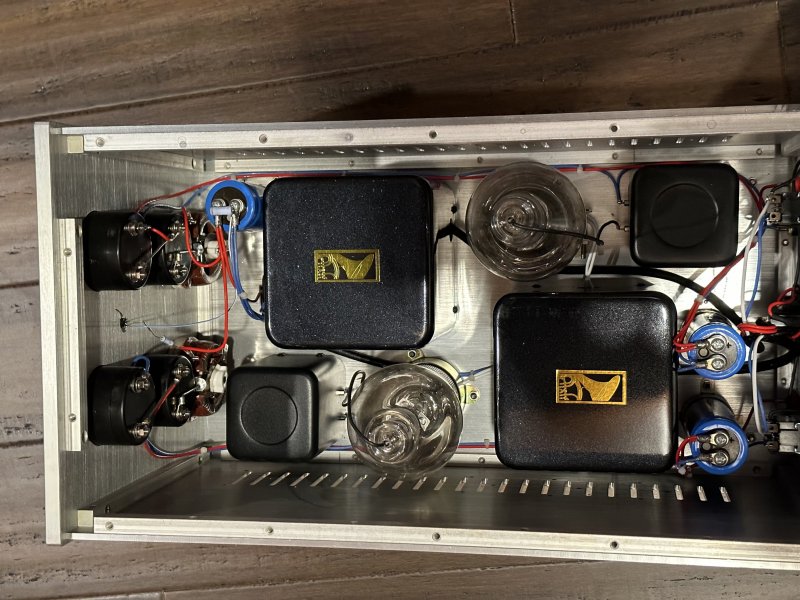
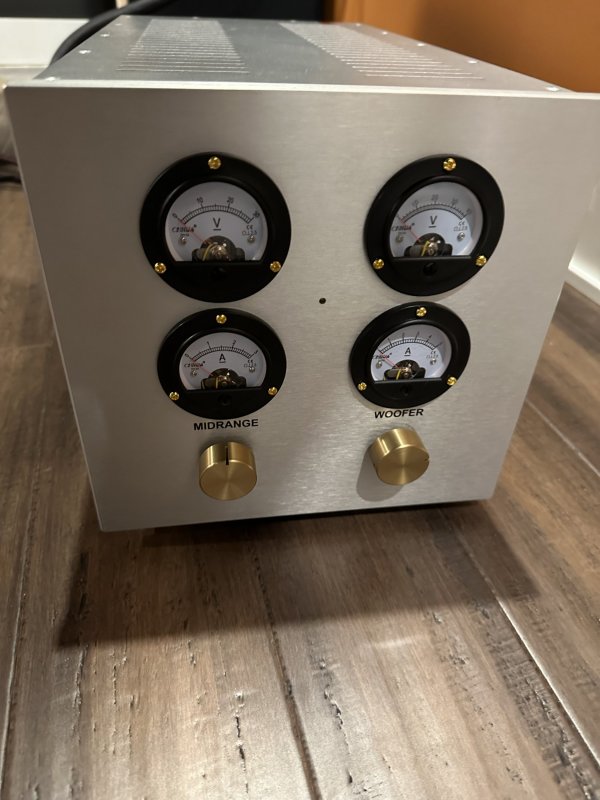
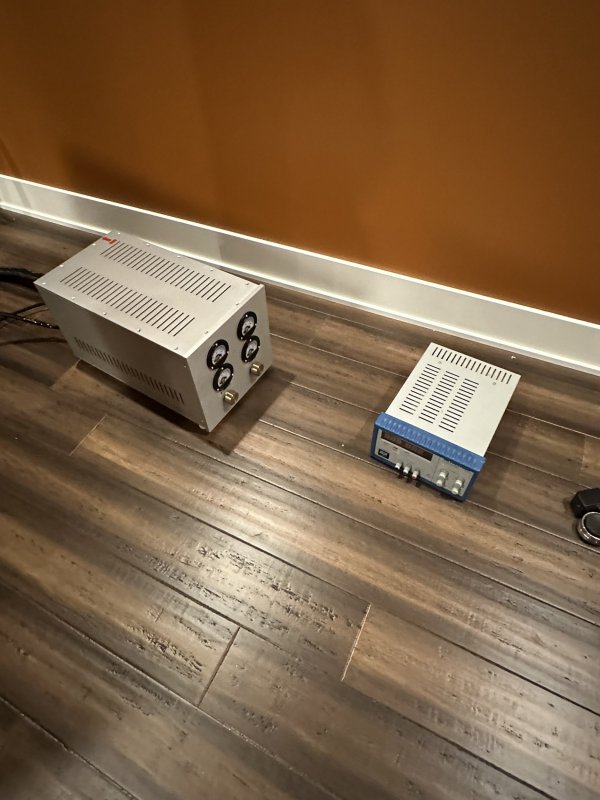
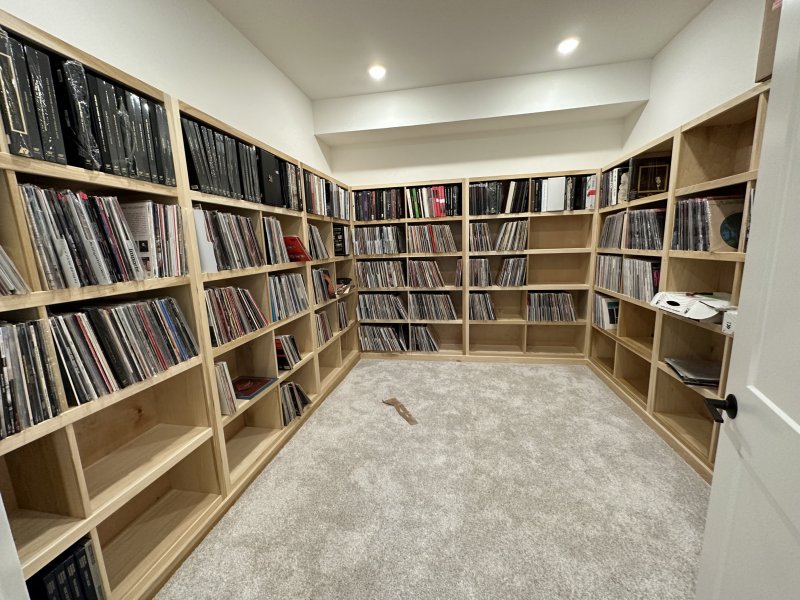
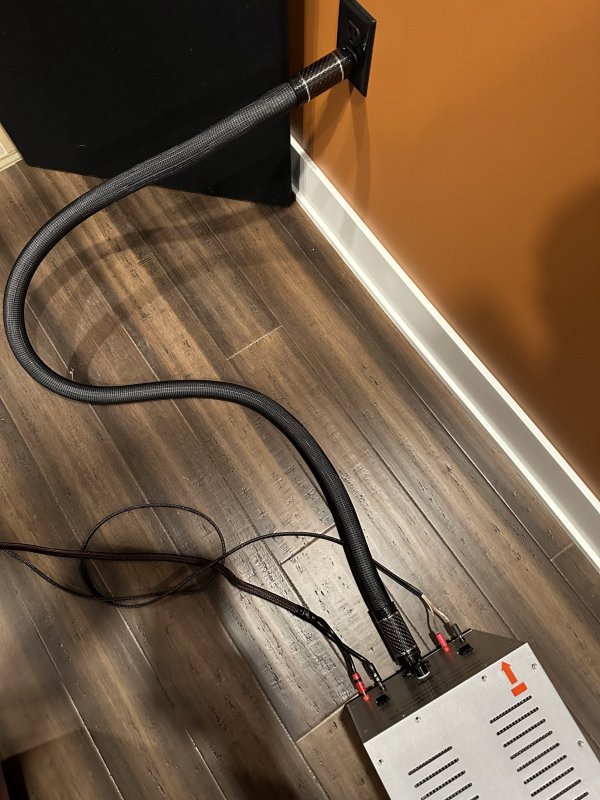
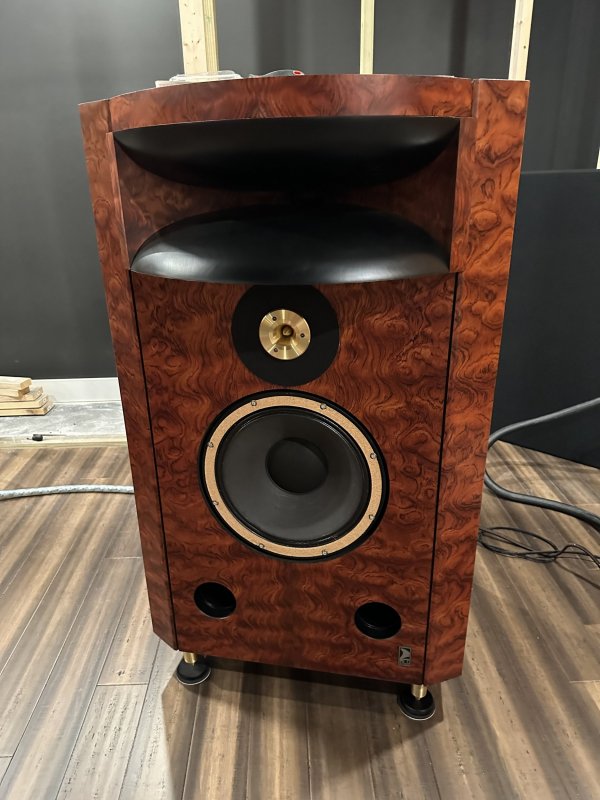
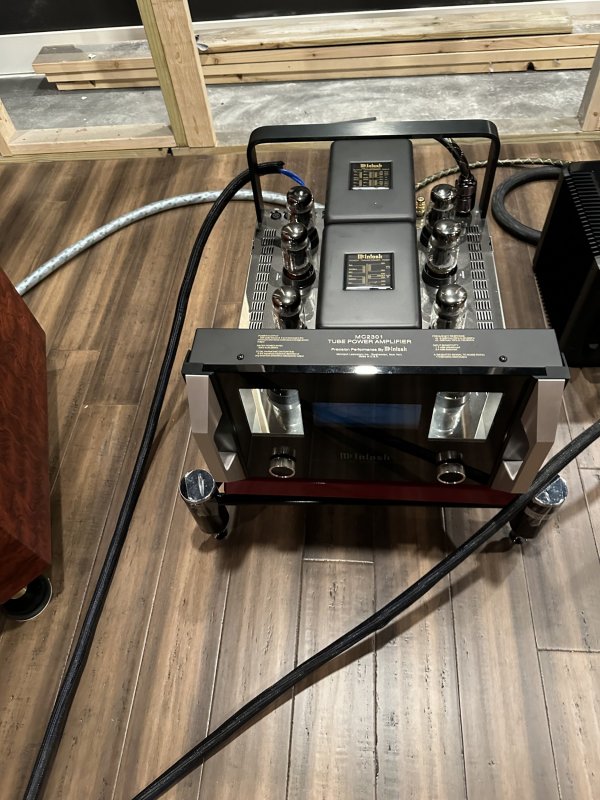
Similar threads
- Replies
- 36
- Views
- 2K
- Replies
- 17
- Views
- 4K
- Replies
- 203
- Views
- 15K
- Replies
- 3
- Views
- 2K
Staff online
-
treitz3Super Moderator
Members online
- GroovySauce
- keithc
- Bones13
- Echo1
- Król_Artur
- flowcharts
- Lakegolf
- Opabin
- elem79
- Colekat
- Salectric
- Audio Addict
- treitz3
- ab72
- lucia1506
- Nirlin
- tmallin
- audio42
- Hyperion
- Ultimate Audio
- Mike
- PeterST2
- pr1nce
- lektor1944
- andromedaaudio
- ncampos
- fbs
- littlej
- Audiocrack
- Juiced
- hopkins
- Oortje
- abeidrov
- rad
- dennis h
- Rexp
- Sarge
- Bbock
- bryans
- analogsa
- Magnuska
- kadent06
- apropos
- SlapEcho
- ecwl
- Voltrix
- bonzo75
- defride
- audiom3
- Neil.Antin
Total: 1,636 (members: 60, guests: 1,576)
| Steve Williams Site Founder | Site Owner | Administrator | Ron Resnick Site Co-Owner | Administrator | Julian (The Fixer) Website Build | Marketing Managersing |
















